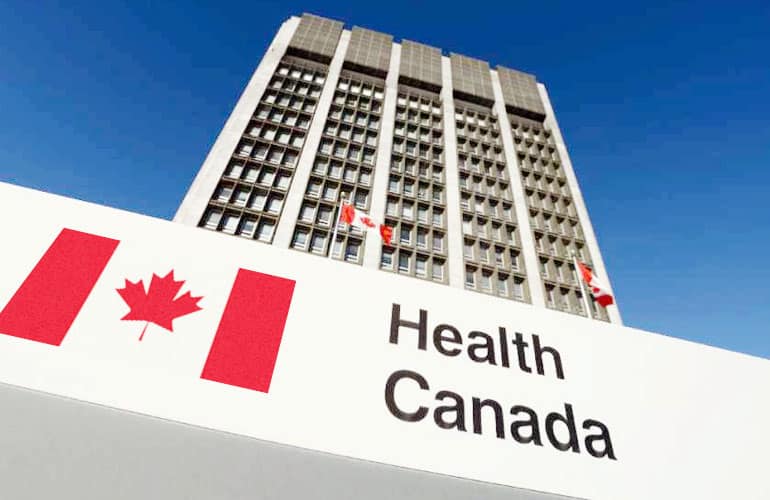Health Canada, the country’s regulating authority in the sphere of medical devices, has published a guidance document dedicated to incident reporting under the new regulatory framework, which becomes effective from June 23, 2021.
The document provides additional clarifications and recommendations to be considered by medical device manufacturers in order to comply with the applicable requirements on mandatory reporting of adverse events associated with medical devices. However, it is important to mention that the approach described in the document represents the position of the authority and is not binding – a responsible entity is allowed to apply an alternative approach, provided that any and all regulatory requirements are met. Additionally, such an approach should be discussed with Health Canada in advance.

Table of Contents
Moreover, the regulating authority is entitled to request additional information beyond the scope of the present guidance, should this information be reasonably necessary to assess the risks associated with the medical device in question. The authority additionally emphasizes that if the patient was revived, this would be considered a near incident and would also be reportable.
General Principles of Reportable Incidents
First, the document outlines the main principles upon which the adverse event reporting is based. For instance, the authority pays special attention to the following:
- Multiple incidents with the same device. Under the general rule, several incidents associated with the same medical device should be reported as separate events unless they occurred in the course of a single use.
- Use error. According to the guidance, all cases of potential use errors should be subject to reporting. In this regard, the responsible party shall also conduct the appropriate evaluation and prepare the results to be provided to the regulating authority once requested. It is stated that the medical device manufacturer is the one responsible for mitigating the risks associated with use errors.
Incidents That Should Not be Reported
Apart from describing the criteria related to cases subject to mandatory reporting, the present document also outlines the scope of situations that fall outside the scope of reporting requirements.
According to the guidance, such incidents include the following:
1. The user has identified a deficiency before using the device. This rule applies if the deficiencies in question would be easily identified in advance if they were to happen again. For instance, this applies in the case of damaged packaging of a medical device supplied sterile. In such cases, the potential user will easily find the defect and abstain from using the device.
2. Incident took place due to the patient’s condition. This applies only if the situation took place due to a patient’s specific condition, which existed before the device was used or occurred during the use irrespectively of the impact caused by the device. At the same time, should the situation as described above actually take place, the medical device manufacturer shall duly document the results of investigations in order to ensure the medical device itself performed as intended and had no adverse impact on the situation.
3. Malfunction protection operated correctly. If the device has a built-in malfunction protection mechanism and the mechanism operated as intended when the situation occurred, there will be no grounds for reporting, provided there was no harm caused to the patient.
4. Abnormal use. This rule applies if the medical device was used in a way other than initially intended by its manufacturer (“off-label” use). It is important to distinguish off-label use from use error. In the first case, the individual using a medical device intentionally commits actions falling beyond the scope of the instructions for use provided by the medical device manufacturer. Such cases are not subject to reporting to the regulating authority and should be handled internally by the healthcare institution.
Reporting Timeframes
Another important aspect related to adverse event reporting relates to the timeframes within which the responsible party shall duly notify the regulating authority about the event that occurred and provide all necessary information. The authority states that all reporting timeframes refer to when Health Canada must first be notified. Such a notification could be performed in different forms: a preliminary report could be submitted either separately or together with the final report. The particular form to be used should be determined depending on the information available. The calculation of all periods starts from the date the representative of a responsible entity is notified of the event that occurred.
The guidance further describes the following types of reporting:
1. Preliminary report for an incident occurring in Canada. If an adverse event associated with serious consequences for the health of the patient occurred in Canada, the responsible entity shall duly notify the regulating authority within 10 calendar days. If there is no direct connection between the incident and malfunction of the device, but several similar incidents took place, the responsible entity shall submit the appropriate report within 30 calendar days. It is also important to mention that if the responsible entity has concerns about whether the particular incident is subject to reporting, a report should be submitted to the authority within the timeframes usually applicable for this type of report.
2. Preliminary report for an incident occurring outside Canada. In the case of adverse events taking place outside the country, a preliminary report should be submitted as soon as possible after informing the local authority about the corrective actions to be taken or after the request from the appropriate authority to take such actions. According to the guidance, the wording “as soon as possible” should be construed as “48 hours”. If the investigation related to the adverse event has already been completed, the responsible entity is allowed to submit both preliminary and final reports at once.
3. Submission of the final report. According to the applicable regulations, when submitting a preliminary report, a responsible party shall also indicate the timetable for further actions to be taken with regard to the incident, and also on the submission of a final report. The regulating authority will assess the timetable submitted in order to evaluate the impact on the safety of patients. Under the general rule, the final report should be submitted to the regulating authority as soon as the information required becomes available to the responsible entity. However, if it is difficult to indicate the accurate dates when the final report could be submitted, the responsible entity shall at least provide the timetable for the immediate actions to be taken, as well as the dates when further updates will be provided.
In summary, the present Health Canada guidance describes in detail the reporting requirements related to adverse events occurring both in Canada and abroad. The document outlines the main criteria to be taken into consideration when determining whether the particular incident is subject to reporting or not, as well as the timeframes for reporting depending on the place where the incident occurred and the type of report to be submitted.
Sources:
How Can RegDesk Help?
RegDesk is a next-generation web-based software for medical device and IVD companies. Our cutting-edge platform uses machine learning to provide regulatory intelligence, application preparation, submission, and approvals management globally. Our clients also have access to our network of over 4000 compliance experts worldwide to obtain verification on critical questions. Applications that normally take 6 months to prepare can now be prepared within 6 days using RegDesk Dash(TM). Global expansion has never been this simple.


